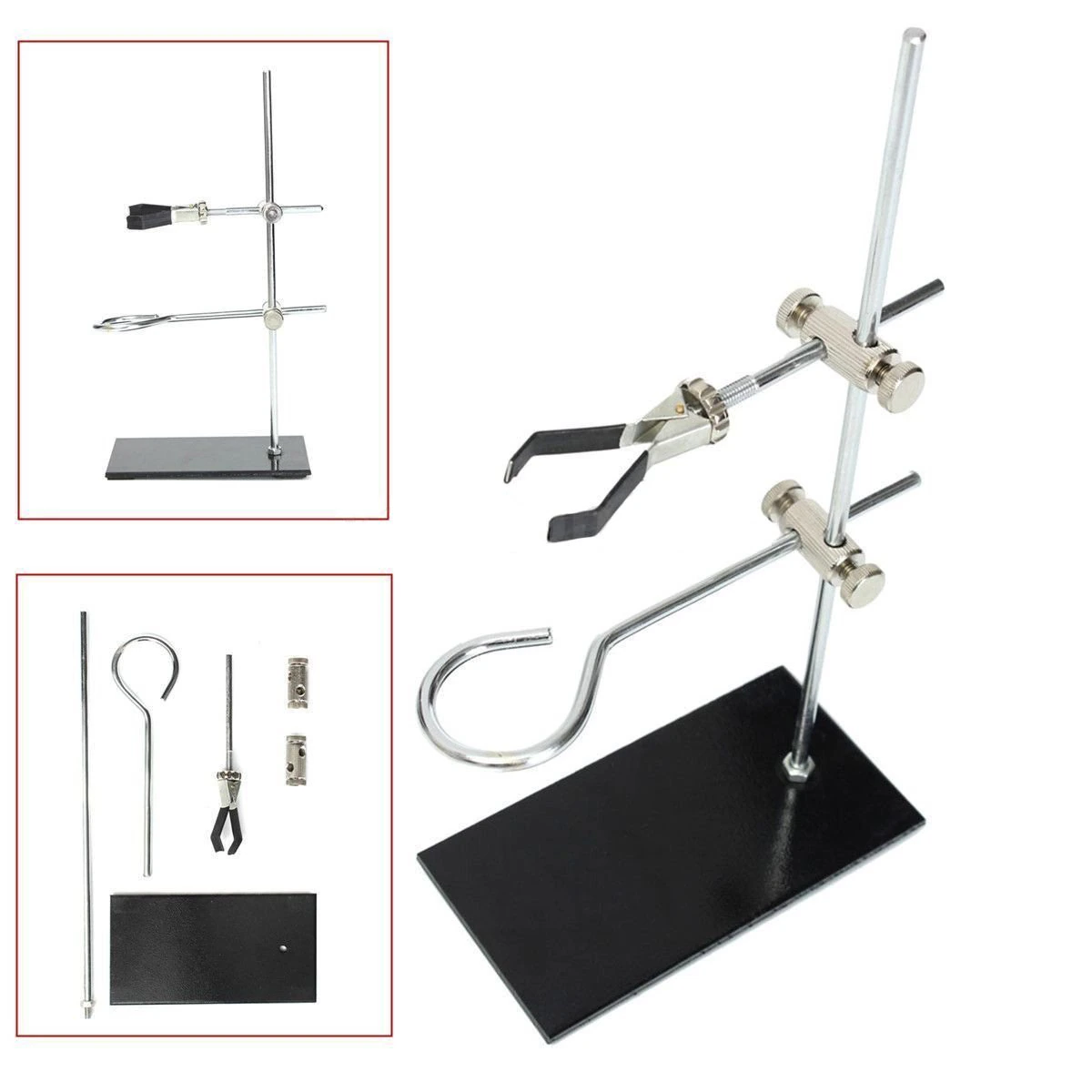A retort stand (a clamp or ring stand) is a piece of scientific equipment intended to support other equipment and glassware, such as burettes, test tubes, and flasks.
A retort stand commonly has a cast iron base of around 200 x 125 mm and a rod that may be up to 750 mm long and screws into a female thread in the ground. This is enough height for most experiments and fits inside fume hoods or glove boxes.
Base
A retort stand is an essential piece of laboratory equipment that helps hold glassware for various chemistry experiments. These can include distillation, titration, and filtering.
A stand comes in various shapes and sizes, from a simple flat metal plate to a triangular design with a welded-on metal rod grid. It can also be made from a plastic or stainless steel base.
Having a sturdy base is essential for stability during chemistry experiments and to prevent the retort from tipping over or collapsing. The best retort stands are well-designed and constructed to resist the wear and tear of frequent use. They should be regularly cleaned and kept dry to avoid rusting. A good quality retort stand will help conduct a successful experiment and provide the researcher peace of mind. It can be used with various other lab tools to ensure the smooth running of a laboratory.
Rod
Retort stands are scientific equipment that supports other parts of laboratory equipment and glassware, such as test tubes, flasks, and burettes for titration experiments. These items are held on a retort stand by clamps attached to the rod.
Typical retort stands have a cast iron base of around 200 x 125 mm with a rod that may be up to 750 mm and screws into a female thread in the ground.
The solid base lowers the center of gravity and helps increase stability. A taller rod is typically replaced by a tripod for stability when supporting more extensive apparatus, such as huge tubes and bulk chemical bottles.
A retort stand is essential for any laboratory, especially in chemistry, where it is necessary to perform distillation and other chemical reactions. They are available in various sizes and designs to suit different types of retorts. They also help ensure the safety and accuracy of chemical experiments by providing stable and secure support.
Clamp
The clamp of a retort stand is a piece of laboratory equipment that holds a retort in place during chemical experiments. It consists of a base, rod, and clamp and is made of metal like aluminum or steel to be durable and corrosion-resistant.
Clamps are standard laboratory tools that hold glassware and other vessels, such as beakers, test tubes, and burettes. These instruments must be fitted securely and adequately to prevent falling or coming loose during an experiment.
Retort stands typically have a cast iron base of around 200 x 125 mm. The rod may be up to 750 mm and screws into a female thread in the ground. This height is sufficient for most experiments and fits within fume hoods and glove boxes.
Accessories
A retort stand, ring stand, or clamp stand is essential equipment in any laboratory. It has a base and a rod, usually made from cast iron or steel, which can support various apparatus.
Retort stands come in all shapes and sizes, from simple metal to complex wood-based models. They are a must-have in any lab, especially for the chemist, as they can hold various scientific equipment, including test tubes and flasks.
A retort stand can also be equipped with some cool accessories. For example, a retort ring is an accessory that can be attached to a retort stand to better accommodate specific types of glassware. Other cool accessories include a three-prong, versatile burette clamp. They all help better position a retort and prevent it from falling. Moreover, the best retort stand should withstand the heat of bunsen burners and resist corrosion from acid and lye.


No comments yet